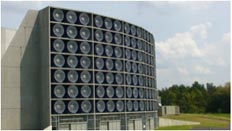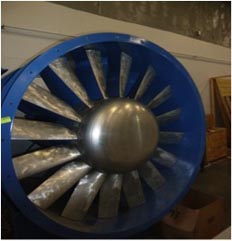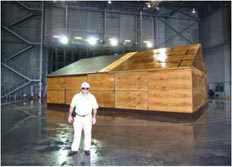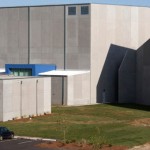
It was my distinct pleasure to attend a steering committee meeting at what I see to be the finest building materials research facility in the world just south of Charlotte, NC in Chester County S.C. at the new IIBHS Insurance Institute of Business & Home Safety. This facility and others at UF and a brand new facility at FIU interface weather and exterior and interior building components in as close to real-life conditions as can be done outside of mother nature. The organization that I was lucky enough to be involved with included SERRI, Oakridge Laboratories, The University of Florida Coastal Engineering program www.eng.ufl.edu and the Dept. of Homeland Security through FEMA and State of Florida Mitigation office. I thought the combination of academia, genuine hurricane research and real-life considerations make for a true benefit to the ones we all serve, the people, the folks that pay our bills, fund the research and pay their insurance and tax bills.

The six-story research facility is 21,000 s.f. with 105,350 horsepower fans that can generate category 1 wind speeds The simulator when fully wound up takes 30 megawatts of power equaling that used by 9,000 houses and include up to 8 inches of rain per hour to simulate hurricane and wildfire storm conditions. All three of these are huge issues for the public in general. A decrease in the cost of these damages will help all Americans in their cost for insurance and protect their health and well being. Not just the direct physical health but the angst that I often see from persons displaced from their home for months and sometimes years. Many of these displaced persons especially the elderly seem to give up hope with the loss of their castle, their home, the place where their memories were made and kept. The American public can thank the insurance industry for funding this facility and it is my sincere belief that both the companies and the insured gain extraordinarily from this endeavor.

Our specific study for this visit was the effect of extreme weather on shingle roofing. A number of full-scale samples were built and they are now being set into place at the IBHS site. Beyond that up to 27 properties throughout Florida have been inspected with a fine-tooth comb to document loose shingle tabs usually appearing in just one of the corners of the shingle. In addition, samples have been taken from certain properties slated for demolition and returned to the lab at UF for further review. The plan is to gain an understanding of how a shingle ages both artificially under UV lights as well as under the Florida sun and identify the issues that occur in these roofs. This is extremely important as the need to shelter in place barring a flood threat is more and more common with the proliferation of building on the coast and the time necessary to evacuate all of these people combined with the uncertainty of where a storm may actually hit when the order to evacuate is made.
I cannot express how proud I am to be a small part of a great endeavor.
